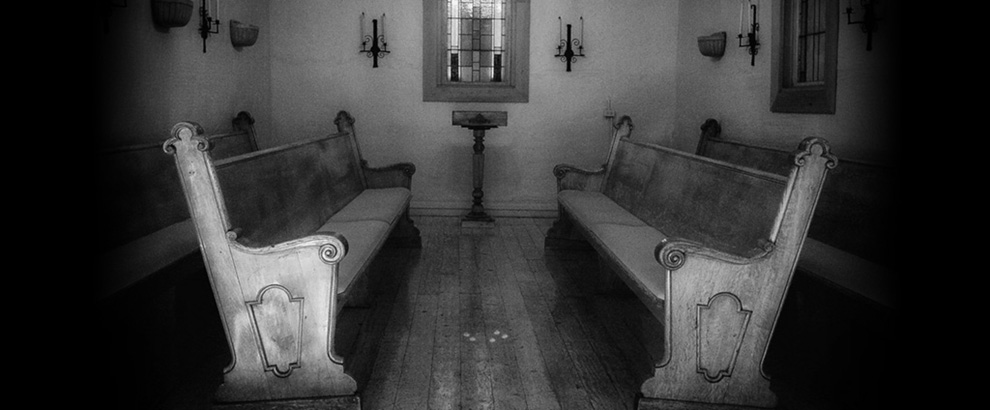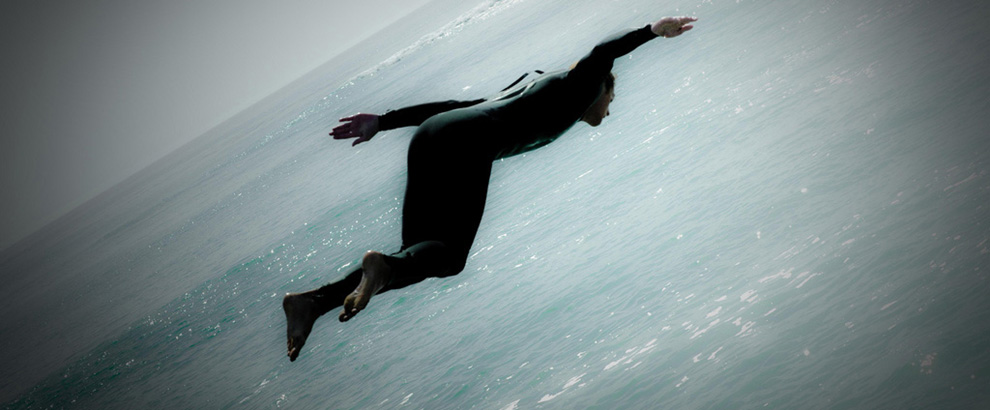
A row of black men clad in black uniforms is down on one knee, their arms interlocked along the sideline of what is obviously a football field. Their heads are bowed, while behind them stands a row of racially varied men in casual, mostly identical civilian clothes, their arms also hooked together as they stare into the near distance.
It commands a kind of tender patriotism that asks: What is it to love one’s country, and, for that matter, to love anything?
Music from deep mournful cellos begins to play as the scene comes to life, though the figures and subsequent scenery from around the stadium are animated, and in a rich palette of colors.
It is impossible not to notice that no words are ever spoken, either from the figures on screen or any narrator. It is left to the cellos to carry the entire audio load.
But the pacing and texture of the sounds are just different enough from the original song being reprised that it takes a second or two of orientation for the listener to realize, “Oh, this is the national anthem.”
Of the United States of America.
Land of the free—and the deeply troubled.
***

***
“National Anthem” is the very title that Oakland, California-based artist Kota Ezawa attached to his one-minute-and-thirty-nine-second video inspired by former San Francisco ’49ers quarterback Colin Kaepernick’s silent “take a knee” protests in 2016 during the traditional playing of the anthem before NFL games.
Kaepernick’s gesture soon spread to other teams around the league, causing roughly equal parts consternation and solidarity as the sports world and wider culture dove deeper yet again into heated debate on the issues surrounding America’s tortured racial history.
Ezawa’s video was one of 75 works chosen for the prestigious “Whitney Biennial” exhibit in New York City in 2019, and is currently on display at the 21-c Hotel Gallery in Durham, North Carolina, where I experienced it last weekend. (It will remain there at least through the balance of 2022.)

The work required Ezawa to examine footage from various NFL protests and then painstakingly render them into watercolor paintings that he then animated, stitched together in a video montage, and set to music (by the Boston Cello Quartet). He produced some 200 paintings over the course of nearly 18 months, each of them rendered three times to achieve the shimmering effect he desired.
The video plays in a continuous loop in a small curtained room off the hallway of 21-c, with viewers sitting on low stools. Two out-of-town friends were with me as we wandered in, drawn by the bright imagery and cellos that one doesn’t usually associate with the gladiator sensibilities of football.
We had the room to ourselves, and we sat transfixed through multiple screenings, the better to absorb the full sensual experience of the mournful music, bowed heads and conjoined arms of the players, black and white and shades between, who were either sitting on benches, kneeling beside them, or standing arm-in-arm along a sideline, somber and solemn as can be.
Copyright matters have kept the video off You Tube, but “National Anthem” is freely available (at least for the moment) on the Oakland Art Museum’s Facebook page, so if you’re on or have access to Facebook, let’s take a look at it now before resuming discussion. Here’s the link and just below that, a couple of individual paintings from the series:
https://www.facebook.com/museumca/videos/1122995625210500/
***

***
The juxtaposition of these warriors—prepping for arguably the fiercest competition waged by human beings this side of war but paused for a few moments in tender, brotherly identification with the unwarranted suffering of others—hangs like a weighted cloud over the room.
The cello notes ring true, melodic and beautiful. This is not a Jimi Hendrix experiment in sound, nor a quick-cut, rapid-fire tableau of police brutality with snarling dogs and fire extinguishers loosed on a fleeing crowd as an amped-up anthem pounds away in the background.
Ezawa instead offers us a soft-hued, slow camera pan of contemplative gazes on the faces of players brought to their knees or standing with bowed heads, prayer-like, for an idea that is at the very root of their country’s founding, if not always practiced in its history.

Just minutes prior to their unleashing of the game’s required ferocity, the players’ bearing calls for a country that owns up to its errors, its need for both penitence and self-forgiveness, the imperative that it show something other and beyond the brute strength and violence these players will put on display as soon as the whistle blows.
The soundless somberness of the screen commands a kind of tender patriotism that asks: What is it to love one’s country, and, for that matter, to love anything? What does it ask of us?
Is it to beat one’s breast, chant “America (Me!) first!”, and turn a blind eye to wrongdoing while hanging a giant flag in front of one’s home or business?
Does loving one’s country compel one to ignore or deny its faults and the depredations that follow virtually every country through the thorny thickets of imperfect choices they face in a forever-fractious and compromised world?
After all, love of a person requires pretty much the opposite, yes? None of us gets very far in this life simply ignoring the foibles and deficiencies of our intimates, nor by sticking our fingers in our ears when they feel compelled to bring attention to our own.
Truly, the only way to form a more perfect union—whether of country or interpersonal relationship—is to turn toward all the conflicts and contradictions that are roiling through all of us at any given time. And to practice the compassion that is the absolute prerequisite for reconciliation, whether with ourselves or others.
This is what made the soft and silent protest of NFL players all the more powerful, and Ezawa, a bi-racial immigrant from Germany-turned-U.S. citizen (more on him in the video below), has captured it perfectly.
No smashed windows or overturned cars, no bellicose, unforgiving accusations with fingers pointed in shame.
Just silence and supplication—”We see you, we are part of you. You, we, all of us, can do better. Hear our plea.”
***
***
A note on the 21c Museum Hotels: an innovative, privately held small chain of nine combination hotel-museums-eat/drink establishments around the country, dedicated to promoting freely accessible fine art in hospitable, conversation-promoting environments. See more at: https://www.21cmuseumhotels.com/
Check out this blog’s public page on Facebook for 1-minute snippets of wisdom and other musings from the world’s great thinkers and artists, accompanied by lovely photography.
http://www.facebook.com/TraversingBlog
Deep appreciation to the photographers! Unless otherwise stated, some rights reserved under Creative Commons licensing.
Elizabeth Haslam, whose photos (except for the books) grace the rotating banner at top of page.
https://www.flickr.com/photos/lizhaslam/
Library books photo by Larry Rose, all rights reserved, contact: larry@rosefoto.com
Video still shots courtesy of the Whitney Museum of American Art https://whitney.org/















During the “National Anthem”, Colin Kaepernick had the gall to kneel and silently protest the killings of unarmed blacks by the police. That was six years ago, and he hasn’t played another season in the NFL because of it. How many George Floyd type incidents have occurred since then? Ten? Twenty? I’ve lost track. How many more times can we realistically expect people to kneel peacefully when nothing changes. Langston Hughes’ poem “Dream Deferred” is a road map of sorts. Some will just throw in the towel (dry up like a raisin in the sun). Some will remain in a constant state of anger (fester like a sore or stink like rotten meat). Some will just say “what-the-hell” and try to move on (crust and sugar over like a syrupy sweet). Then others will let it wear away at them (sag like a heavy load) until it becomes too much, and they simply explode. I think most would agree a substantive kneel is preferable to an angry gun.
An apt addendum to this discussion, Robert, so I’ll add a link here to the Hughes poem, read by him, thanks…
https://www.youtube.com/watch?v=CZIfdWiw3rU
Then there is Enid Kantor , the Turkish pro basketball player who changed his name to Freedom Enid Kantor. He loved the freedom he has in the us. The mention of kapernick invites, even begs the name of Freedom Kantor as well.
How are you doing!
We miss you
When are you coming back?
Xo
M
Hi Mary, I’m looking to be back in Cali come September, the fire situation willing! Hope to see you then. Meanwhile, are you implying/equating Colin Kaepernick’s protests with a lack of patriotism and even disdain for his country, in contrast to Enid Kantor’s love of country? I hope not. I have no reason to minimize Kantor’s words of praise for his adopted homeland, but I see Kaepernick’s action as patriotic too, in the finest tradition of peaceful protest for a cause he feels passionate about, and at great personal sacrifice to his career and even well-being. Cheers to them both.
And cheers to you from the Tarheel state!